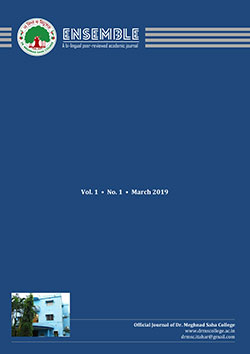Authors’ Guideline
- Authorship: All persons designated as authors should qualify for authorship. Authorship credit should be based only on significant contributions to conception and design, or analysis and interpretation of data; drafting the article or revising it critically for important intellectual content.
- Submission of manuscript: Communications intended for publication must be sent to drmsc.itahar@gmail.com. All manuscripts are reviewed by an editor and members of the Editorial Board and at least two qualified outside reviewers. Decisions will be made as rapidly as possible. The journal does not charge for submission and publication of article
- Preparation of the Manuscript: Manuscript must be written in clear and concise English. Either British or American spelling is acceptable. It must be sent in Microsoft Word format (.doc or .docx). Maximum length of the manuscript is 5000 words including everything. General format of the research papers should be as follows in given template:
- Title Page: The title page should include
- The title of the article, which should be concise and informative.
- Name of all the authors, limited to 6 authors (with one forename of each author in full) followed by their affiliations, department, institution, city, PIN code and country. If more than one department or institution is involved, authors name should be linked to appropriate institutions/departments by inserting consecutive numbers in superscript after relevant names to which the work should be attributed.
- Name, mailing address, fax, phone number and e-mail ID of corresponding author.
- Running title – containing not more than 50 characters.
- Abstract: The second page should carry an abstract of not more than 250 words. For full research paper, the abstract should be compact and precise which should highlight the entire article effectively.
- Key words: Below the abstract, provide key words (minimum six but not more than ten) in alphabetical orders separated by coma.
- Introduction: Clearly state the purpose of the study. Briefly summarize the rationale of the study and clearly indicate the lacunae or deficiencies in previous studies for which present study has been taken up. Give only pertinent references. Do not review the subject extensively.
- Materials & Methods: The paper must clearly define the research methods or methodologies are used in it (Mandatory for research articles). This section also clearly addresses the data sources used for the study.
- Results: Include number of observation and the statistical significance of the findings appropriately. Detailed statistical analyses, mathematical derivations, and the like may sometimes be suitably presented in the form of one or more appendices. Present your results in logical sequence in the text, tables and illustrations. Do not repeat in the text all the data already given in tables, illustrations or both. Emphasize and summarize only important observations. Each table should be typed continuously with the text. Legends for illustrations/figures should be typed continuously with the text (as shown in the template).
- Discussion: Emphasize the new and important aspects of the study and conclusions derived from them. Do not repeat in details data given in the results section. Include in the discussion the implications of the findings and their limitations and relate the research topics. Link the conclusion with the goals of the study but avoid unqualified statements and conclusions not completely supported by your data. Discussion should be relevant and an unnecessary lengthy presentation should be avoided.
- Conclusion: A very brief summary note of the work with a concluding remark should be given. This should include the novelty and implication of the work and its contribution to the upliftment of the present scientific knowledge in general.
- Title Page: The title page should include
References: The journal prefers to use APA referencing style. Mention references which are used within the body of the articles. The references must be verified by the author(s) against the original documents. A quick guide to APA referencing style is available below.



